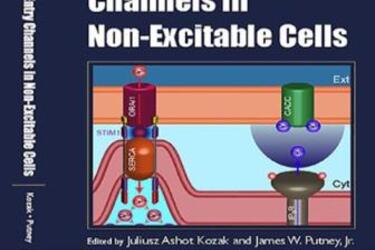Methods in Signal Transduction
New book release, edited by Wright State associate professor of neuroscience, cell biology and physiology, J. Ashot Kozak
July 21, 2017

July 21, 2017
The concept of signal transduction is a well-established tenet of biological sciences. Calcium ion plays an essential role primarily through cell signaling. Over the past two decades, considerable advances have been made in the molecular and biophysical properties of calcium entry pathways in non-excitable cells. The term "non-excitable" refers to cells that are not capable of firing action potentials. With the exception of neurons, muscle cells and some endocrine cells, all cells in the body are non-excitable.
J. Ashot Kozak, Ph.D. and James W. Putney, Jr., Ph.D. edited a recently published
Finding the right college means finding the right fit. See all that the College of Science and Math has to offer by visiting campus.